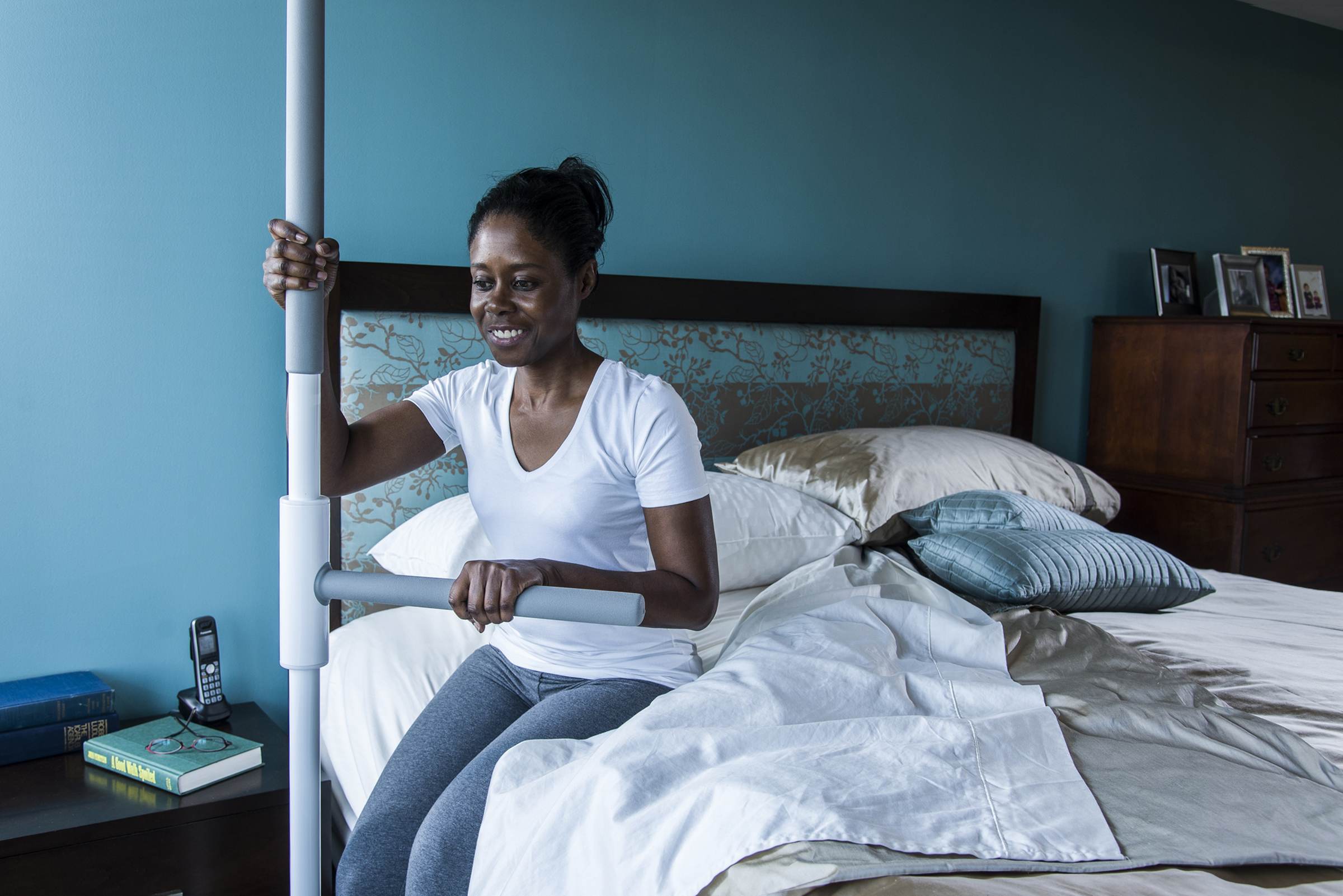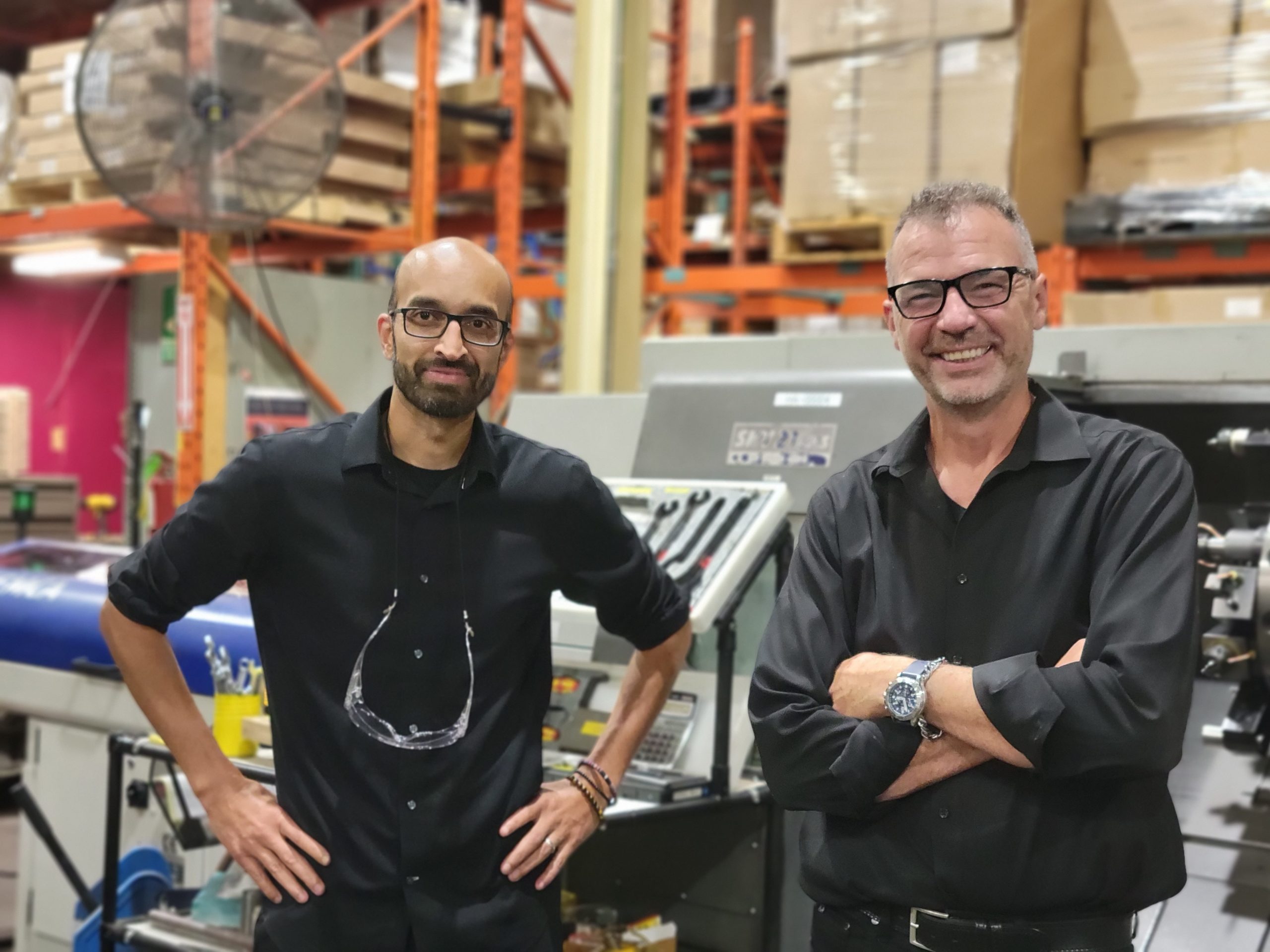Collaboration Between Engineering and Industrial Design is Driving Alumni Success for Ottawa’s HealthCraft Group
Ty Burke
As John O’Brien’s grandmother aged, she was confined to a wheelchair. The change limited her ability to enjoy family events, and it saddened O’Brien to see the impact on her quality of life. But O’Brien took the experience to heart and drew on it when he founded the HealthCraft Group. The Ottawa-headquartered manufacturer of premium support and safety products helps older people maintain their independence, even as their mobility wanes.
“Anytime we wanted to go somewhere, it caused my grandmother fear. She’d had a couple of falls while transferring in and out of the wheelchair,” says O’Brien. “And as I got to university, this was in the back of my mind.”
As a mechanical engineering student at Carleton in the 1980s, O’Brien spotted a poster for a province-wide engineering competition, and decided to enter a design for a wheelchair modification that could hop curbs, reducing the need for the transfers his grandmother feared. O’Brien’s design didn’t win the competition, but it did sow the seeds for what would become his life’s work.

During this project, O’Brien connected with the owner of a medical retail store and an occupational therapist. Together, the trio founded HealthCraft, a medical device manufacturer primarily focused on fall prevention products that help people age in place, like grab bars, bed rails and seating supports.
“Falls are much more common than people realize. By some definitions, fall injuries are an epidemic, and it remains one of the big challenges of our times,” says O’Brien. “Some falls result in a big shift in people’s lives. There are injuries, and even deaths. People can lose their independence. It’s a big issue, and many falls are preventable. Stopping the growth of this epidemic is our purpose as a company and we do that through our products.”
The design of these products is key to their acceptance. Many people who need products like grab bars are reluctant to install them. So HealthCraft seeks to design things that are subtle and stylish, without sacrificing functionality.
“The product has to solve a person’s needs, but it can’t look institutional,” says O’Brien.
“A lot of the institutional look comes from the metal, and that is hard to get around. We need to make something that does not look institutional, but still matches the functional requirements of supporting a person or being able to adjust to different positions while being easy to manipulate.”
One approach has been to combine the grab bars with bathroom accessories, to disguise the safety in plain sight. Although the products are still made of metal, they appear less institutional because of their design, and HealthCraft’s PLUS Series has been recognized with a prestigious 2023 Red Dot Design Award.

Products like grab bars need to have rigorous construction, HealthCraft’s products must combine engineering with industrial design. The first sketches on a paper are often rough, but in-house manufacturing capabilities allow the company quickly transform an idea into a prototype, and HealthCraft’s on-site load testing cell allows the company to evaluate engineering concerns.
Here, John works closely with the company’s design team, led by Sunil Achia, a graduate of Carleton’s Bachelor of Industrial Design program. Back in 2000, Achia did his 4th year capstone project with HealthCraft, which led to an internship placement.
“I never thought I would be working for the same company for 23 years. But every year we’ve found new ways to expand what design can do for HealthCraft. I’m happy that I get to go to work every day and use the skills I learned in school to solve real world problems.”

HealthCraft has also maintained a strong and collaborative relationship with the university. The design team participates in the alumni mentorship program, student portfolio reviews, and gives factory tours for university classes. And when HealthCraft is looking to hire new staff with specific skills, they often turn to their network at Carleton for recommendations.
O’Brien credits his Carleton education as a major factor in the company’s success.
“I could not do what we’re doing without it,” he says. “Coming out of high school my marks were not that great, but thankfully Carleton gave me a chance – and I ended up graduating with distinction. That’s a pretty cool thing. I engaged with the right people, who pulled me along and inspired me. When I look back at the impact university had, they empowered me with knowledge. Design is an empowering tool that can help a country through stressful events. It creates new value that can be amplified. And the cool thing is that these products can still have an impact and create jobs, even years after you’ve done the work.”